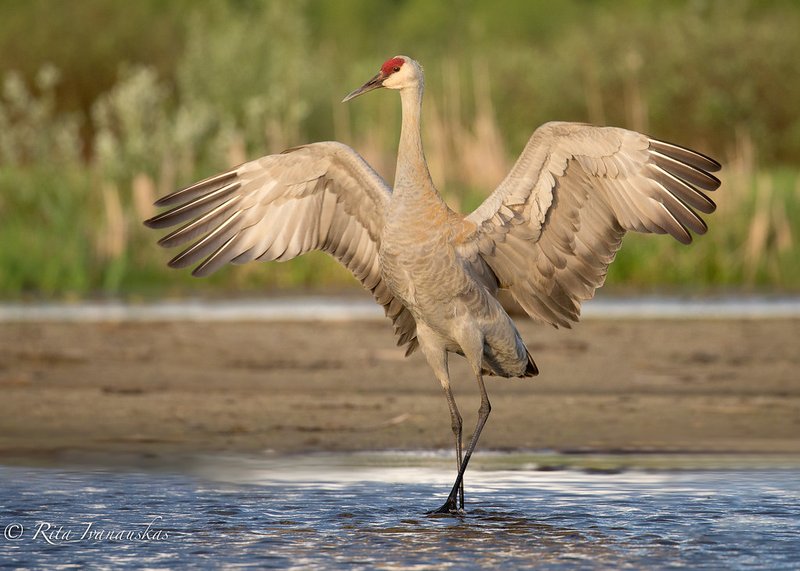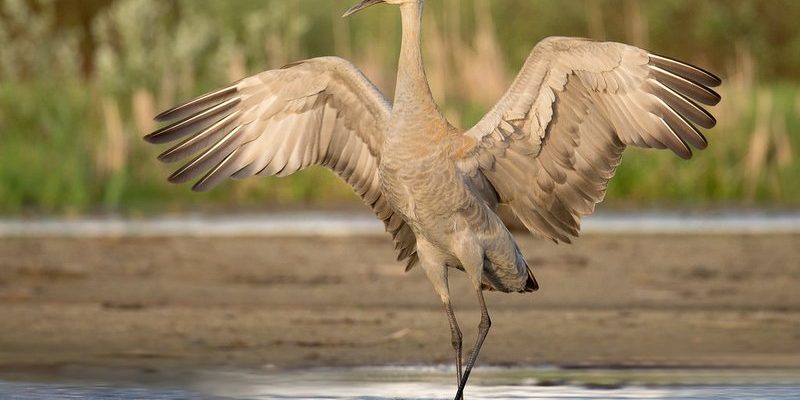
Cranes have a rich variety of species, each with its own unique set of behaviors. From the majestic whooping crane to the elegant sandhill crane, these birds invest a great deal of time and effort into finding and wooing a mate. It’s fascinating to see how these rituals not only strengthen their pair bonds but also play a crucial role in their survival. So, let’s dive deeper into the world of cranes and explore how they court and mate!
The Dance of Courtship
One of the most striking aspects of crane courtship is their elaborate dance. This isn’t just any old two-step; it’s a captivating display that involves jumping, bowing, and even tossing small objects into the air.
When cranes meet for the first time, they often engage in what is known as a “dancing display.” This involves a series of coordinated movements that can include flapping their wings, leaping into the air, and making trumpeting calls. It’s kind of like watching a couple at a wedding dance, full of excitement and joy—except these are two birds trying to impress each other.
The choreography doesn’t just serve a romantic purpose; it also helps establish a pair bond. By dancing together, cranes signal their *compatibility* and commitment to one another. It’s their way of saying, “Hey, I’m not just any crane. I’m the one for you!”
Vocal Communication: The Language of Love
Cranes are known for their loud and distinctive calls, which play a significant role in their courtship and mating rituals. These vocalizations aren’t just random squawks; they’re meaningful sounds that convey emotions and intentions.
During the courting season, cranes communicate through a series of trumpets, rattles, and bugles. Their calls can be heard from miles away, effectively informing other cranes of their presence. Here’s the thing: these calls are a crucial part of their courtship display. When a male crane calls, it’s not just to show off his voice; he’s inviting a female to join him in a duet. Their *harmonized calls* are not only a show of strength but also a way to deepen their bond.
You might be wondering what happens if a crane doesn’t have a good singing voice. Don’t worry! Craned adapt their calls to synchronize with their mate’s vocalizations, creating a unique duet that is tailored just for them. This synergy is essential for cementing their pair bond and ensuring they’re on the same page—literally!
Nesting: The Next Step in the Relationship
Once cranes have successfully courted, it’s time to think about nesting. Choosing a suitable nesting site is crucial, and cranes often select locations near water bodies like ponds or marshes. These spots offer not only safety but also abundant food sources for the growing chicks.
Cranes are attentive parents. Once a pair has established their nest, they often take turns incubating their eggs to ensure that they’re kept warm and safe. The female usually lays two eggs, which both parents will diligently care for. They even work together to protect their nest from potential threats, showcasing their commitment to each other and their future family.
It’s fascinating to see the transformation of their relationship from courtship to parenthood. The behaviors they display during this time reinforce their bond and help them become a successful team. This unity is vital for the survival of their young, teaching them teamwork and responsibility.
Rituals Beyond Mating
Cranes don’t stop their displays once they pair up. In fact, the rituals continue long after the mating season has passed. These ongoing behaviors help maintain their bond and reinforce their relationship.
In many crane species, the pair will engage in “duet calls” throughout the year, not just during courtship. This ongoing vocalization serves to keep their bond strong and maintain their territory. It’s like a couple checking in with each other and making sure they’re still on the same wavelength.
Moreover, cranes can often be seen engaging in playful activities such as preening, dancing, and even feigning injuries to distract potential threats. These actions not only strengthen their relationship but also add a layer of fun and playfulness to their lives.
This long-lasting commitment is truly remarkable. It’s a testament to the depth of their connection, showing that their relationship goes beyond mere survival.
Challenges in Courtship and Mating
While the courtship and mating rituals of cranes are beautiful, they’re not without challenges. Environmental changes, such as habitat loss and climate change, can severely impact their ability to find mates and successfully raise their young.
Many crane species are now considered threatened or endangered due to human activity. It’s heartbreaking to think that something as lovely as a crane’s courtship could be at risk. Conservation efforts are underway to help protect these beautiful birds and their habitats, but it requires teamwork—not unlike the cranes themselves!
Additionally, courtship can be competitive. Males may sometimes engage in territorial displays to assert their dominance and attract females. This competition can lead to conflicts, impacting their ability to form stable pairs.
Ultimately, these challenges shine a light on the resilience of cranes and highlight the importance of preserving their environments. Understanding their courtship and mating rituals can help raise awareness about the conservation needs of these wonderful creatures.
The courtship and mating rituals of cranes are a stunning blend of dance, music, and deep emotional connection. From their intricate dances to their meaningful calls, these rituals are not just about survival; they’re about building lasting relationships.
Watching cranes interact provides a glimpse into the beauty of nature’s designs. Their commitment to one another, even in the face of challenges, teaches us about loyalty and love. As we learn more about these magnificent birds, we can appreciate the importance of protecting their habitats and ensuring their survival for generations to come.
Next time you see a pair of cranes, remember the intricate dance of their courtship—the beauty of their relationship—and the vital role they play in our ecosystems. Isn’t nature remarkable?

